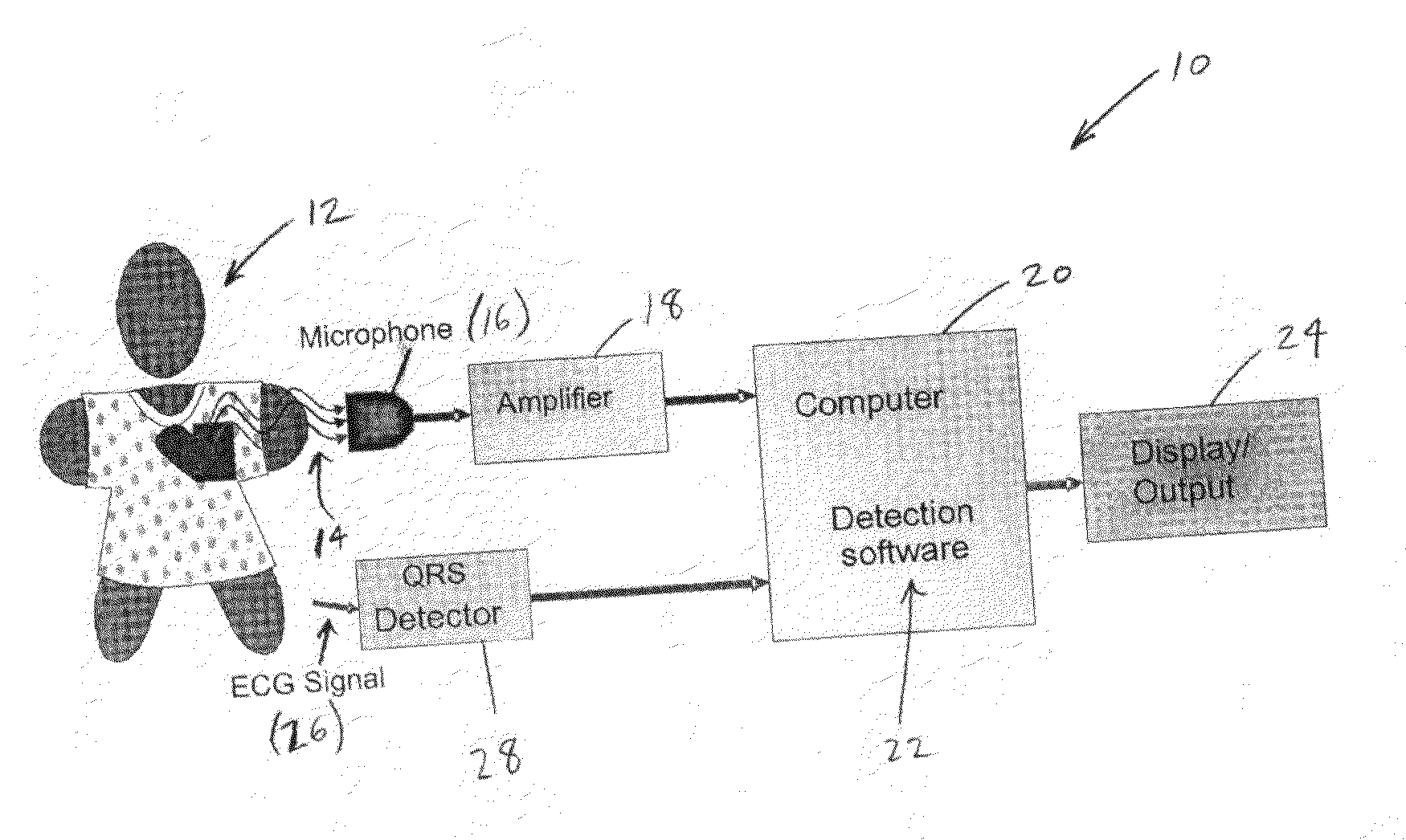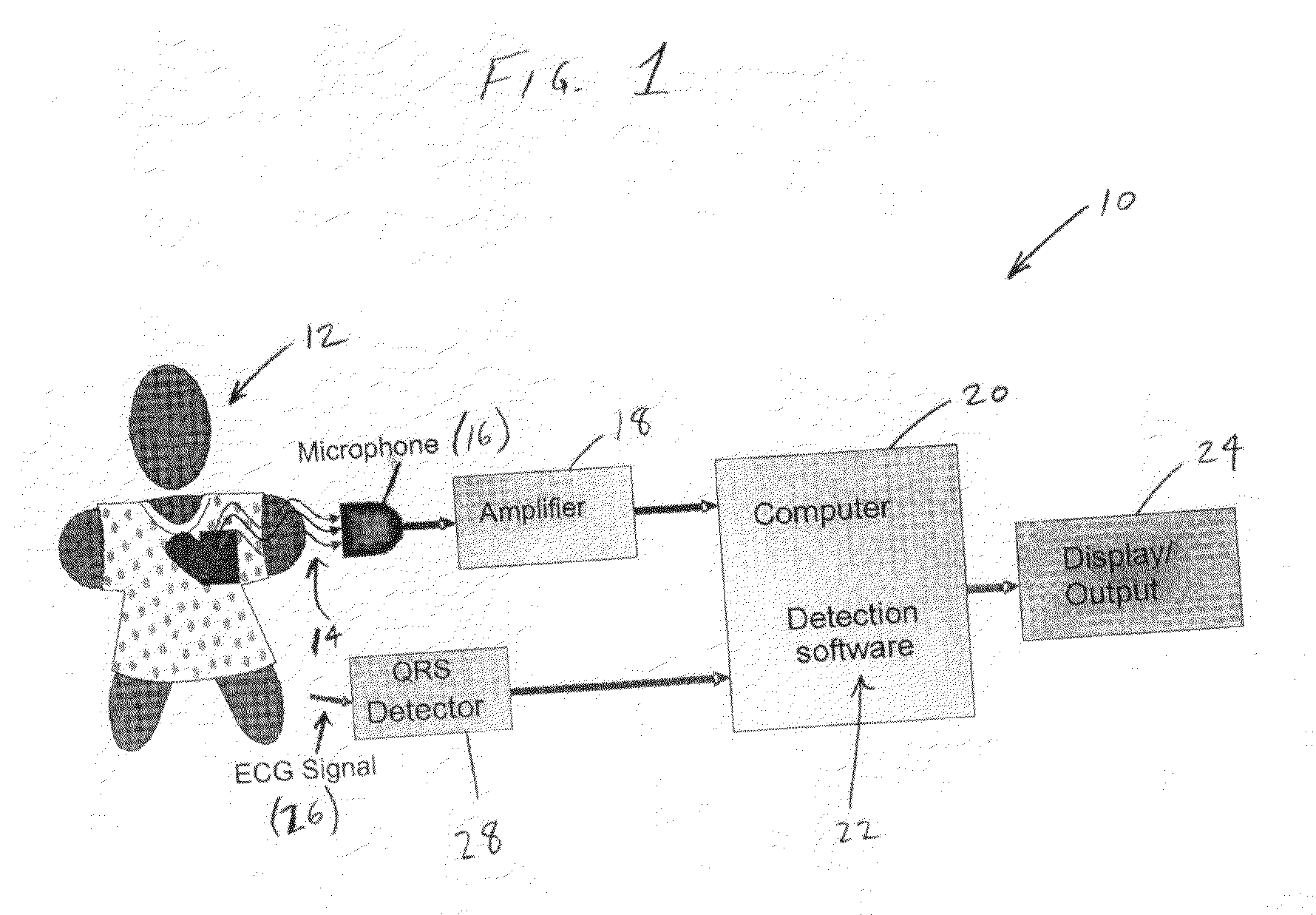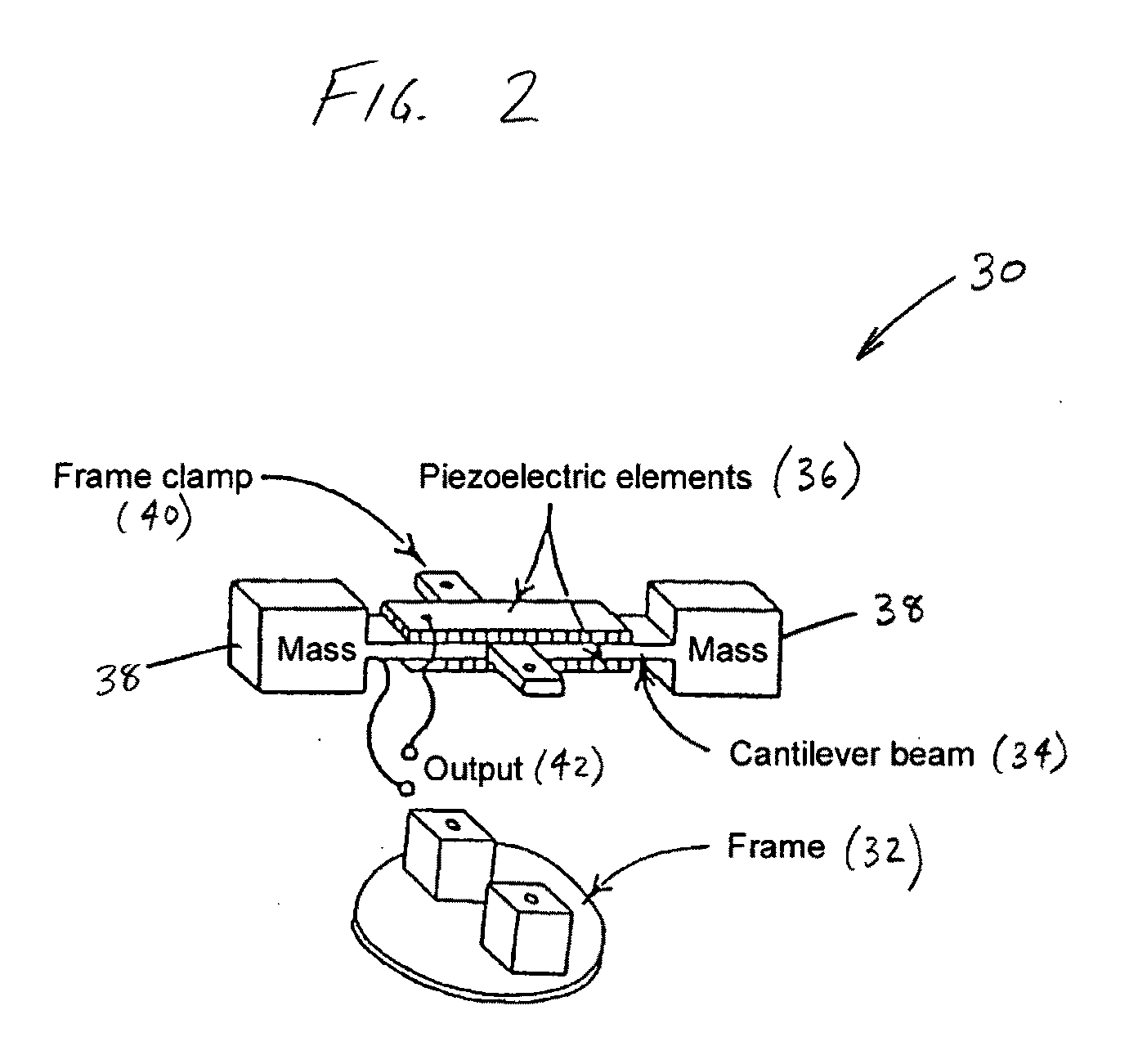System and method for acoustic detection of coronary artery disease
a technology of acoustic detection and coronary artery disease, which is applied in the field of medical diagnostic systems, can solve the problems of affecting the acoustic signal of the heart, affecting the acoustic signal, and affecting the heart, so as to eliminate unwanted artifacts and/or noise in the acoustic signal
- Summary
- Abstract
- Description
- Claims
- Application Information
AI Technical Summary
Benefits of technology
Problems solved by technology
Method used
Image
Examples
Embodiment Construction
[0025]The present invention relates to a system and method for acoustic detection of coronary artery disease (CAD), an includes a transducer for acoustically detecting heart signals of a patient and a computer system which executes detection software for processing the detected heart signals to identify the presence of CAD from the heart signals. The software automatically detects a diastolic “window” of the acoustic signal for analysis, and automatically edits the sampled acoustic signal to eliminate unwanted artifacts and / or noise in the acoustic signal. The edited signal is then processed by a plurality of signal processing algorithms, to including spectral analysis algorithms, time-frequency algorithms, global feature algorithms, kurtosis algorithms, mutual information algorithms, negentropy algorithms, and principal component analysis algorithms, to generate a disease vector. The disease vector is then classified to determine whether CAD is present in the patient. Classificatio...
PUM
 Login to View More
Login to View More Abstract
Description
Claims
Application Information
 Login to View More
Login to View More - R&D
- Intellectual Property
- Life Sciences
- Materials
- Tech Scout
- Unparalleled Data Quality
- Higher Quality Content
- 60% Fewer Hallucinations
Browse by: Latest US Patents, China's latest patents, Technical Efficacy Thesaurus, Application Domain, Technology Topic, Popular Technical Reports.
© 2025 PatSnap. All rights reserved.Legal|Privacy policy|Modern Slavery Act Transparency Statement|Sitemap|About US| Contact US: help@patsnap.com



